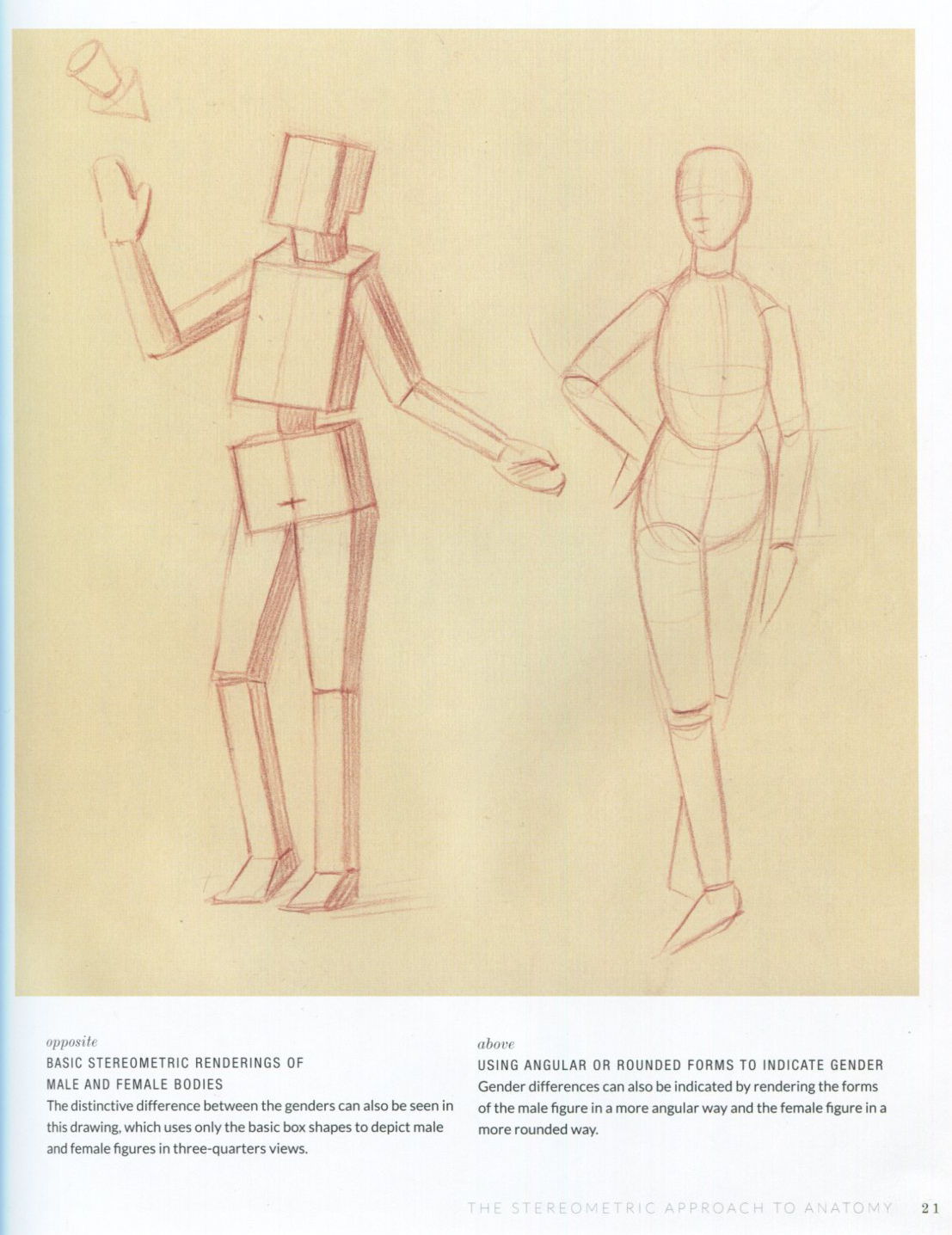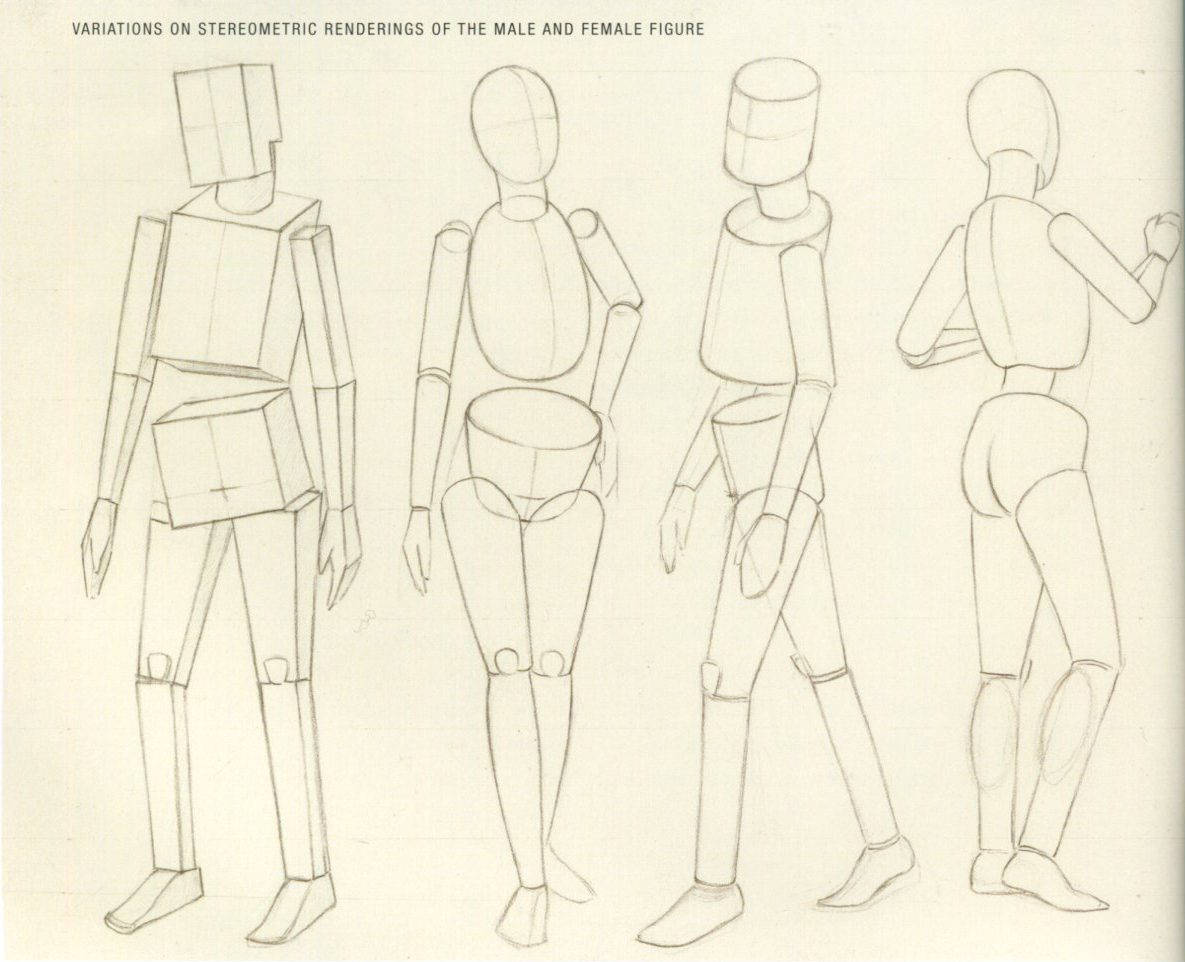In the 2nd chapter of Roberto Osti book Basic Human Anatomy an essential visual guide for artists, a Hybrid conceptualization is explored in great detail. What is meant by Hybrid conceptualization is a combination of the Stereometric approach (which involves geometric solids such as cubes, spheres, cylinders, tetrahedrons etc.)
Conceptualization the skeleton according to its basic structures gives us an idea of how it is built, how its parts are joined together, how it moves and how the weight is carried and distributed.
Hybrid conceptualization offers advantages, its easier and faster to draw and they create a more realistic figure. When studying these proporttions remember that they are generalization, actual proportions will vary somewhat from person to person.
Once you understand the method of analyzing the body you can come up with your own approach.
A few things about the rib cage, the 7th and 8th ribs are the widest point of the ribcage. The 11th and 12th ribs are barely visible from the front, they are referred to as "floating ribs" in this book.
The female hips will be typically wider especially at the pelvic brim which tends to have a more oval shape. Whereas the male tends to be narrower and have a more heart shape.
ALL text and Images are taken directly from Roberto Osti Basic Human Anatomy



















